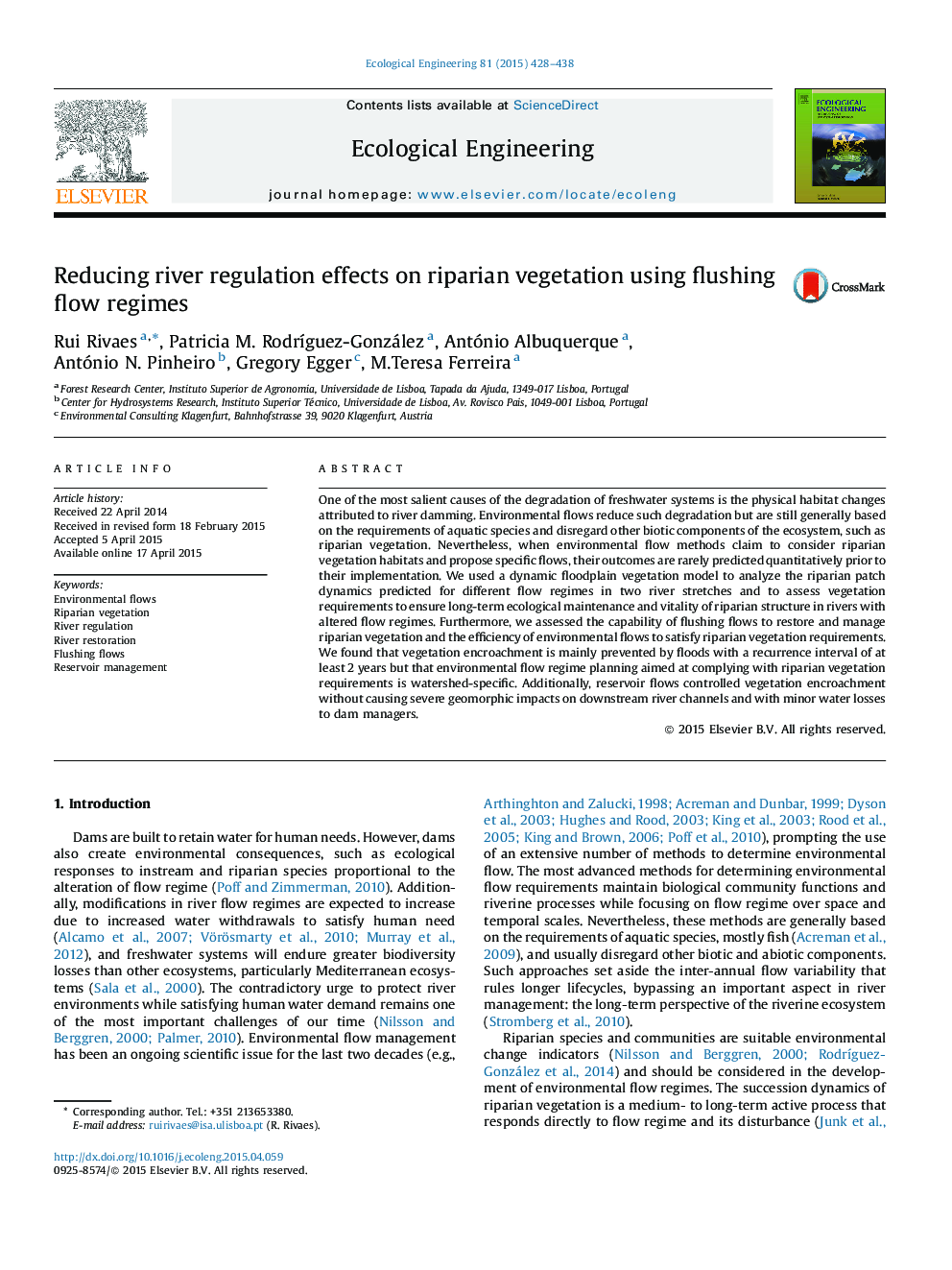| Article ID | Journal | Published Year | Pages | File Type |
|---|---|---|---|---|
| 4389100 | Ecological Engineering | 2015 | 11 Pages |
Abstract
One of the most salient causes of the degradation of freshwater systems is the physical habitat changes attributed to river damming. Environmental flows reduce such degradation but are still generally based on the requirements of aquatic species and disregard other biotic components of the ecosystem, such as riparian vegetation. Nevertheless, when environmental flow methods claim to consider riparian vegetation habitats and propose specific flows, their outcomes are rarely predicted quantitatively prior to their implementation. We used a dynamic floodplain vegetation model to analyze the riparian patch dynamics predicted for different flow regimes in two river stretches and to assess vegetation requirements to ensure long-term ecological maintenance and vitality of riparian structure in rivers with altered flow regimes. Furthermore, we assessed the capability of flushing flows to restore and manage riparian vegetation and the efficiency of environmental flows to satisfy riparian vegetation requirements. We found that vegetation encroachment is mainly prevented by floods with a recurrence interval of at least 2 years but that environmental flow regime planning aimed at complying with riparian vegetation requirements is watershed-specific. Additionally, reservoir flows controlled vegetation encroachment without causing severe geomorphic impacts on downstream river channels and with minor water losses to dam managers.
Keywords
Related Topics
Life Sciences
Agricultural and Biological Sciences
Ecology, Evolution, Behavior and Systematics
Authors
Rui Rivaes, Patricia M. RodrÃguez-González, António Albuquerque, António N. Pinheiro, Gregory Egger, M.Teresa Ferreira,
